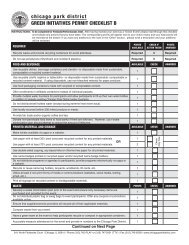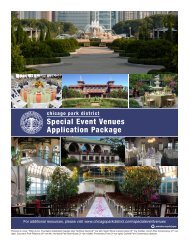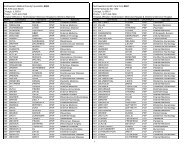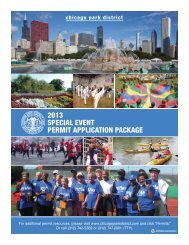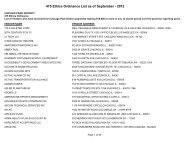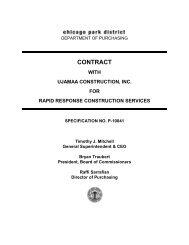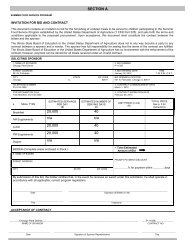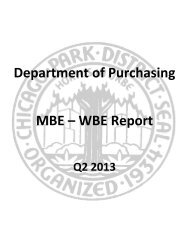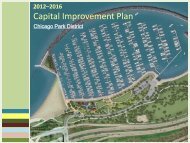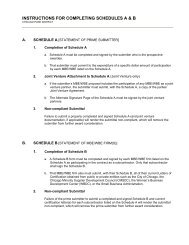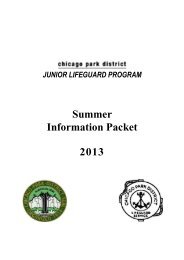2012 Budget Summary - Chicago Park District
2012 Budget Summary - Chicago Park District
2012 Budget Summary - Chicago Park District
- No tags were found...
You also want an ePaper? Increase the reach of your titles
YUMPU automatically turns print PDFs into web optimized ePapers that Google loves.
<strong>2012</strong> <strong>Chicago</strong> <strong>Park</strong> <strong>District</strong> <strong>Budget</strong> <strong>Summary</strong>PrefaceFiscal year <strong>2012</strong> will be one of rebound as well as continued struggles. Financial difficultiescontinue to force governments to make tough decisions, including scaling back labor forces,reducing or eliminating services, and canceling capital infrastructure projects.According to the U.S. Department of Labor, in September 2011 the <strong>Chicago</strong> metro areaunemployment rate was 10.2 percent (not seasonally adjusted), slightly above the Nationalaverage of 9.1 percent. September of 2011 unemployment also had a slight increase from 2010figures, where unemployment was at 9.8 percent (not seasonally adjusted). Analysts andexperts do not anticipate the unemployment rate to return to the prerecession level of 5.8percent for some time. This is important because employment levels not only have a directimpact on income taxes, but also play a significant role in the performance of other revenuesthat rely on a public perception of strength in the economy to flourish, such as revenues relatedto real estate, business, recreation, tourism and consumption.Construction activity was again subdued in early 2011. Single-family home constructioncontinued to be constrained by the overhang of distressed properties in the resale market.However, existing home sales picked up in parts of the City, lowering the inventory of unsoldhomes to a degree. In the multifamily sector, the rental market continued to improve.Residential rents rose further, and credit has become increasingly more available for thepurchase of apartment buildings.Consumer spending increased at a slower rate than during the previous reporting period.Retailers reported that sales were mostly flat. Higher food and energy prices caused consumersto make fewer shopping trips and purchase fewer discretionary items. However auto salesincreased slightly, as a higher demand for fuel efficient cars offset a slight decline in sales oftrucks and SUVs.Predictions for economic growth in <strong>2012</strong> for the City of <strong>Chicago</strong> are bleak and consequently it isanticipated that <strong>Park</strong> <strong>District</strong> revenues will experience only marginal growth, if any, againstrecession years’ revenues. The inflation rate in May of 2011 rose to 3.4 percent signaling adecrease in purchasing power. Inflation is a rise in consumer prices, increasing the cost of living.Generally, an inflation rate of 3.6 percent is well outside the Federal Reserve’s comfort zone. Itwould normally signal a need for action in terms of more restrictive monetary policy to slowprice advances. Though this not the highest the inflation rate has been in recent years, in 2008the inflation rate was 4.18 percent, it is an indicator of economic concern.Though growth is estimated to be slow, the <strong>Park</strong> <strong>District</strong> is committed to maintaining its servicelevels at rates that will still satisfy all of our residents. We again have not raised our propertytax levy and continue to be committed to not putting any unwarranted financial pressure onour citizens.8




